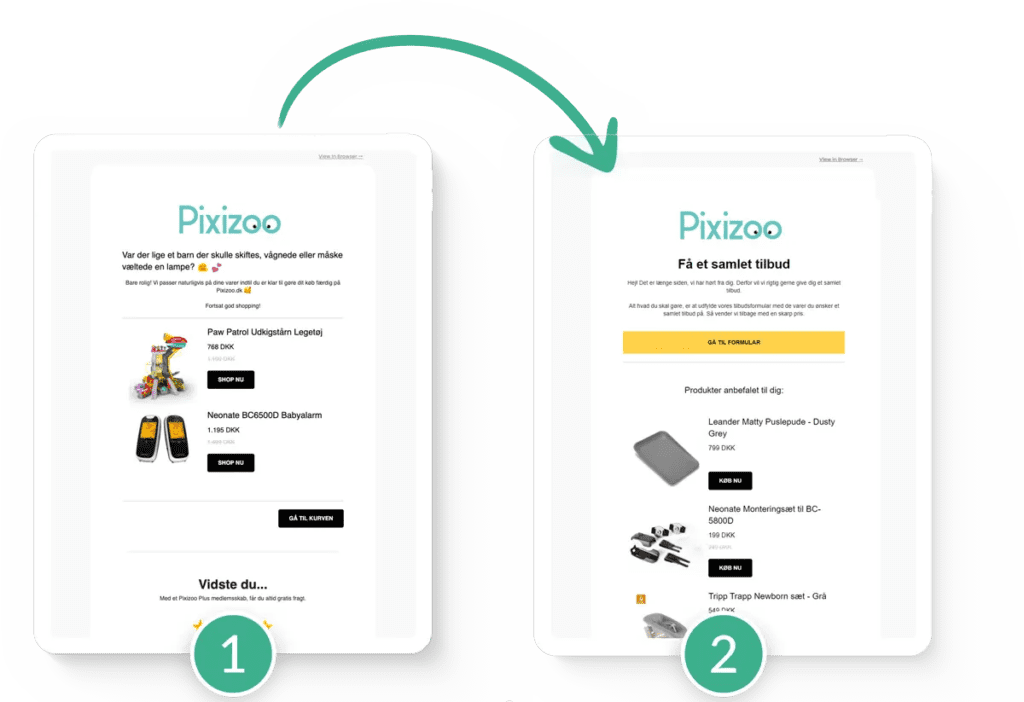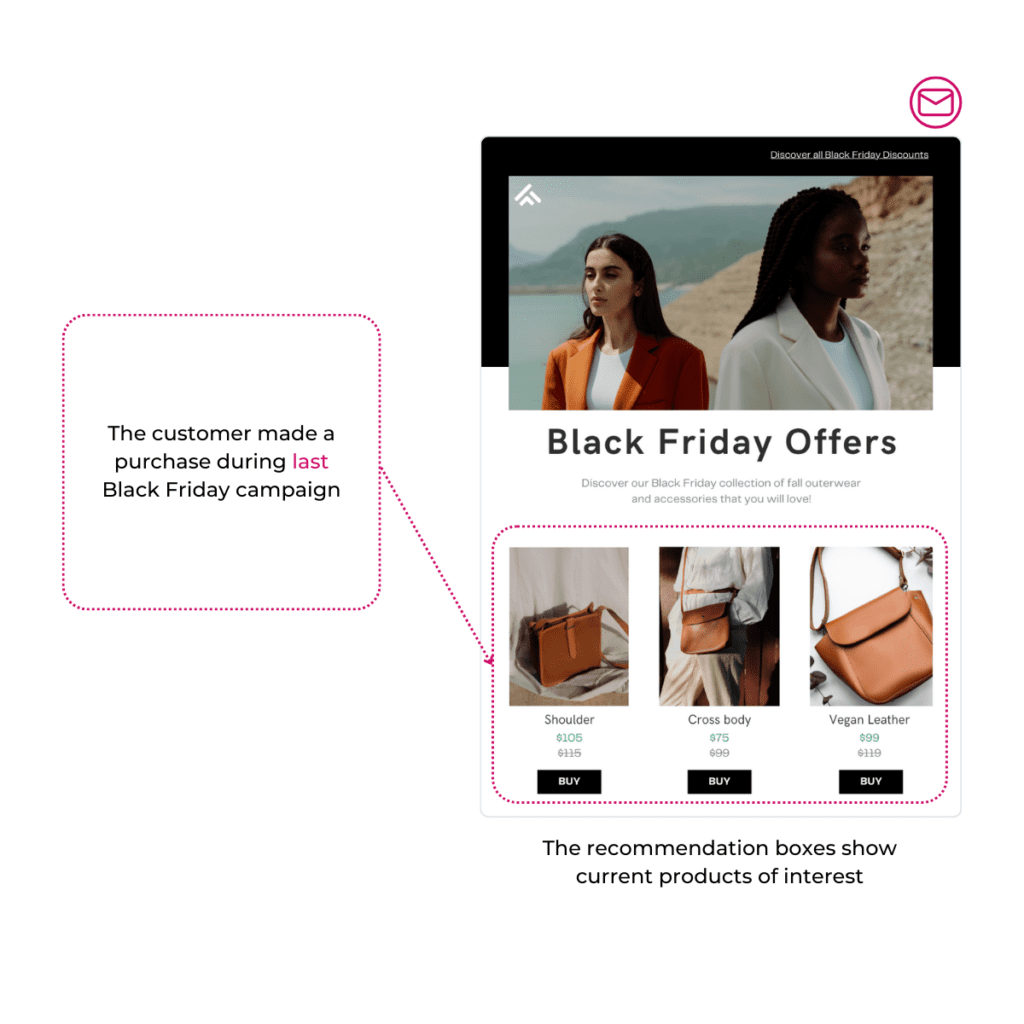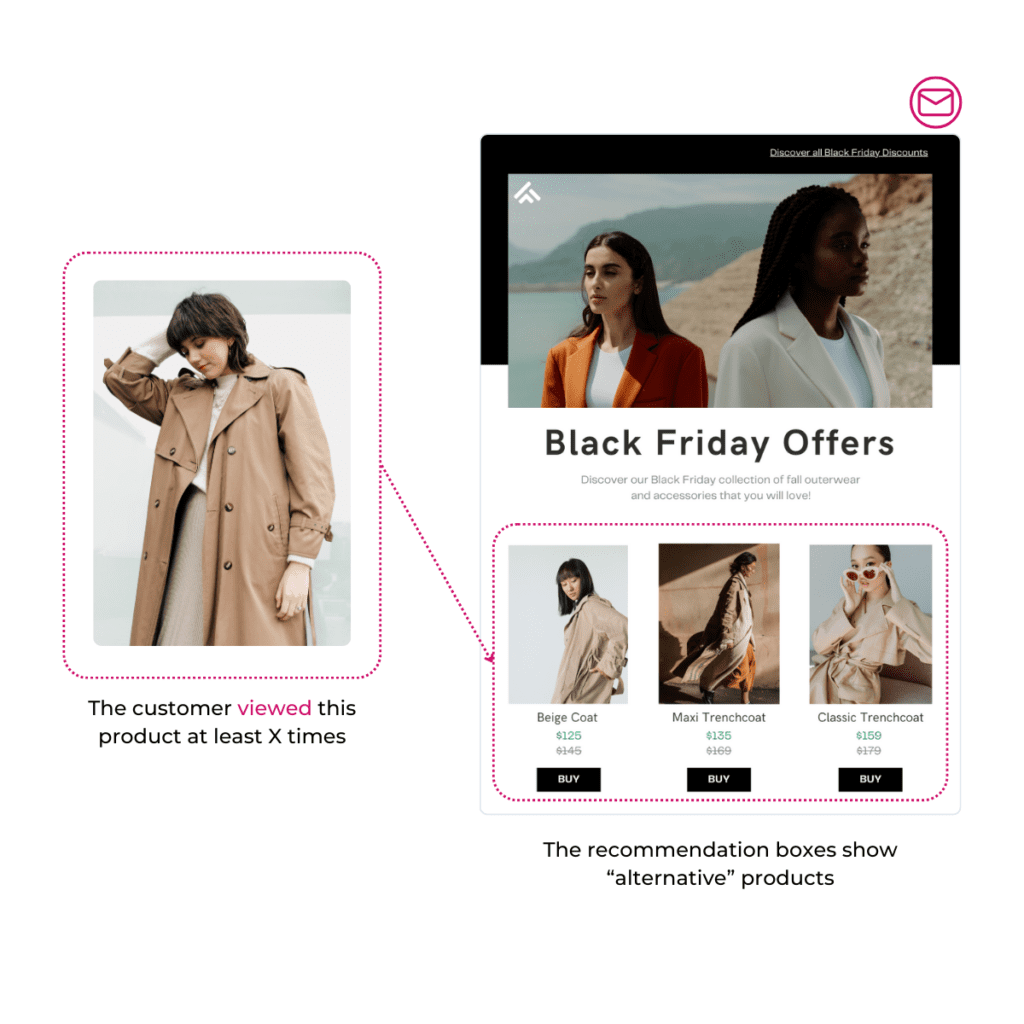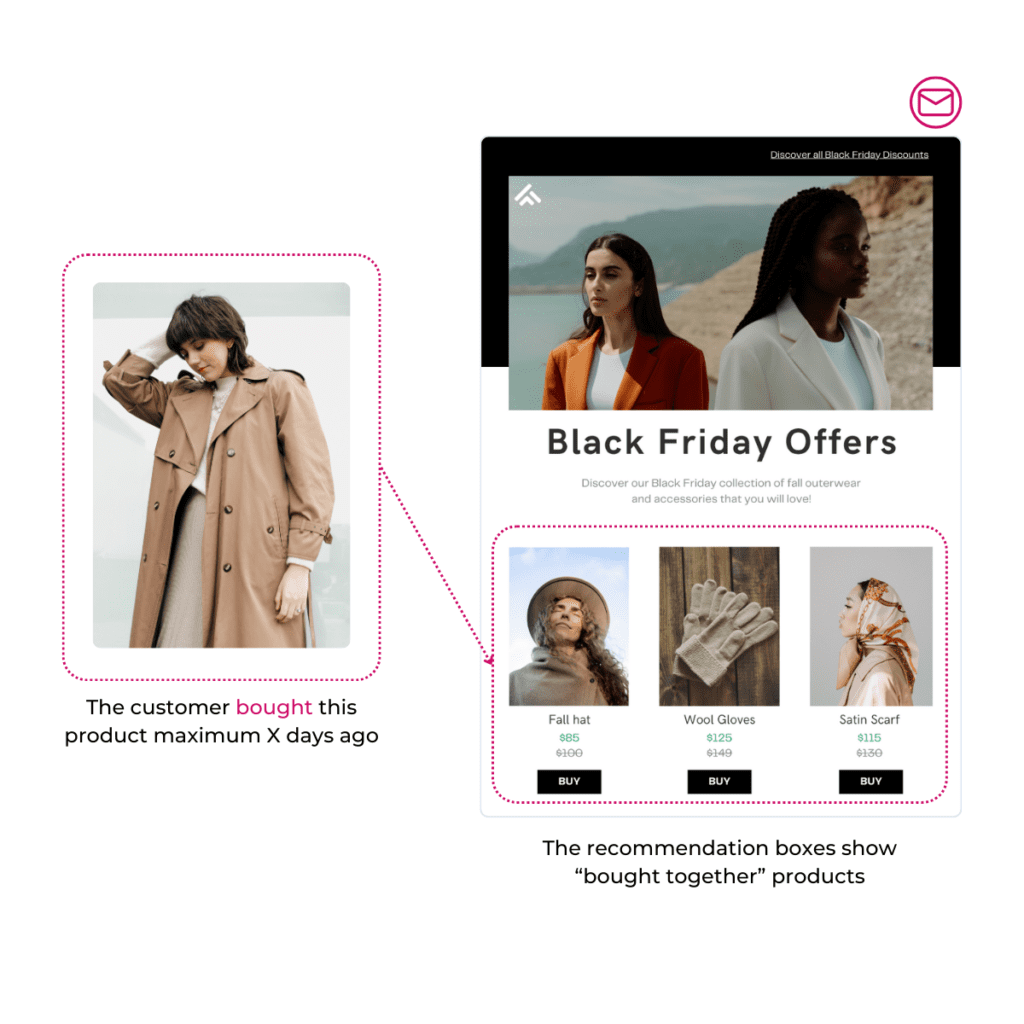One of the year’s busiest days, Black Friday is highly anticipated by shoppers and retailers who offer significant discounts, promotions, and deals on a wide range of products, from electronics to clothing and beyond. Shoppers queue at both physical stores and online to take advantage of these limited-time offers. It is a relatively small time window for abundant events and opportunities for promotions and sales. Therefore, retailers must adopt efficient strategies and stand out from the competition not just with good offers but also with the right offers for the right customers.
The role of email marketing in the industry
In essence, email campaigns provide retailers with a direct and customizable channel to engage with their audience, drive traffic to their online stores, and boost sales during the crucial Black Friday shopping period. To the Gartner CMO Spend and Strategy Survey in 2022, 44% of CMOs answered that email marketing is indispensable to their digital marketing strategy.
Email campaigns can be part of a multi-touch strategy. Retailers can use emails to announce early Black Friday deals, provide sneak peeks, and even send reminders as the day approaches. For existing customers, Black Friday email campaigns can be a way to reward loyalty and encourage repeat purchases. By offering exclusive deals or early access to loyal customers, retailers can strengthen customer relationships.
A subscribed or existing customer is already interested in what a brand offers. It is also highly probable that they are subscribed to multiple brands from the same industry, and in the time leading to Black Friday, their inbox will be filled with various deals and promotions. The inbox becomes a highly competitive destination, and retailers invest many resources to be on top.

Personalized emails give better Black Friday results
In 2023, HubSpot surveyed 1,200+ global B2B and B2C marketers, and 72% said that content personalization is one of the most efficient email campaign strategies. Personalization is essential for e-commerce businesses looking to create a more engaging, relevant, and customer-centric shopping experience. It can increase customer satisfaction, drive sales, and build lasting relationships with a loyal customer base.
Personalization has been on the rise in ecommerce in recent years. Integrating it with email marketing makes it a perfect match, email being one of the more direct channels to the customers. And it shows excellent results. An Adobe survey from 2020 shows that 89% of marketers see a positive ROI when they use personalization in their campaigns.
On Black Friday, customers who receive personalized emails are more likely to open, read, and interact with the content. Since consumers spend an average of 10 seconds reading marketing emails (Statista), with recommendations aligned with their preferences, they are more likely to engage with it and take action. Personalized content, in general, can make customers feel valued and understood, fostering a sense of loyalty.
Hello Retail’s Personalized Newsletter Content can deliver exactly that. To better understand some of the features, let us dive deeper with three examples.
Marketers recognized personalization as the most efficient strategy for email campaigns. (HubSpot, 2023)
Marketers see a positive ROI when they use personalization in their campaigns (Adobe, 2020)
Newsletter Content unique to each recipient
With Newsletter Content from Hello Retail, merchants can automatically include personalized product recommendations in their marketing emails and newsletters. Each recipient will get a unique email with content tailor-made based on their previous activities in the webshop. This is possible with our proprietary AI system, Product Intelligence, which automatically finds correlations between products and their attributes.
The campaign setup can follow various recommendation strategies. Retailers can apply filters and select audiences to match their objectives.
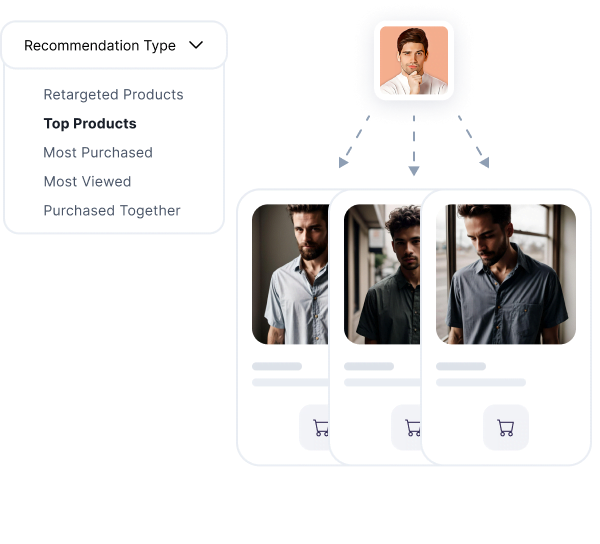

Let’s break it down with examples
To visualize three recommendation strategies, let us take a fashion store as an example. The shop creates a Black Friday collection of discounted outerwear items and accessories for fall. Instead of sending a static email about this campaign to their entire audience, the retailer integrates product recommendations to match their users’ shopping preferences.
Example 1: Audience behavior
We want to target that segment of our audience that was active during last year’s Black Friday campaign. We suppose that it is highly likely that they will be interested in this year’s offers too. We filter the audience and present them with recommendations based on their current interests. Therefore, each user will receive a newsletter containing products from the Black Friday collection that match their individual preferences.
Example 2: Alternatives
The recommendation strategy here is to show alternatives to the product, in this case, a coat, which was viewed by a customer.
Suppose this customer visited the coat product page a few times but hasn’t made a purchase. The objective here is to suggest alternatives from the Black Friday collection that match the style preferences. The discount could encourage the customer to engage with these products instead.
Example 3: Cross-selling
Suppose the customer purchased this coat a few days ago. Therefore, we don’t want to recommend the same kind of product in the email. Instead, we go for a cross-selling strategy. In this example, our Product Intelligence algorithms find products that convert best when bought together with a coat, such as hats, gloves, or scarves, and automatically include these items in the newsletter section.
In conclusion, personalization can be a driving force behind a successful Black Friday email strategy. It not only differentiates retailers but also builds stronger connections with customers, ensuring a memorable and rewarding shopping experience.
Take the next step
This article only scratches the surface of what retailers can achieve with Personalized Newsletter Content. Each webshop can have a unique strategy, and our team is here to help you discover how you can use it to build reliable audience segments and strong email marketing strategies.
